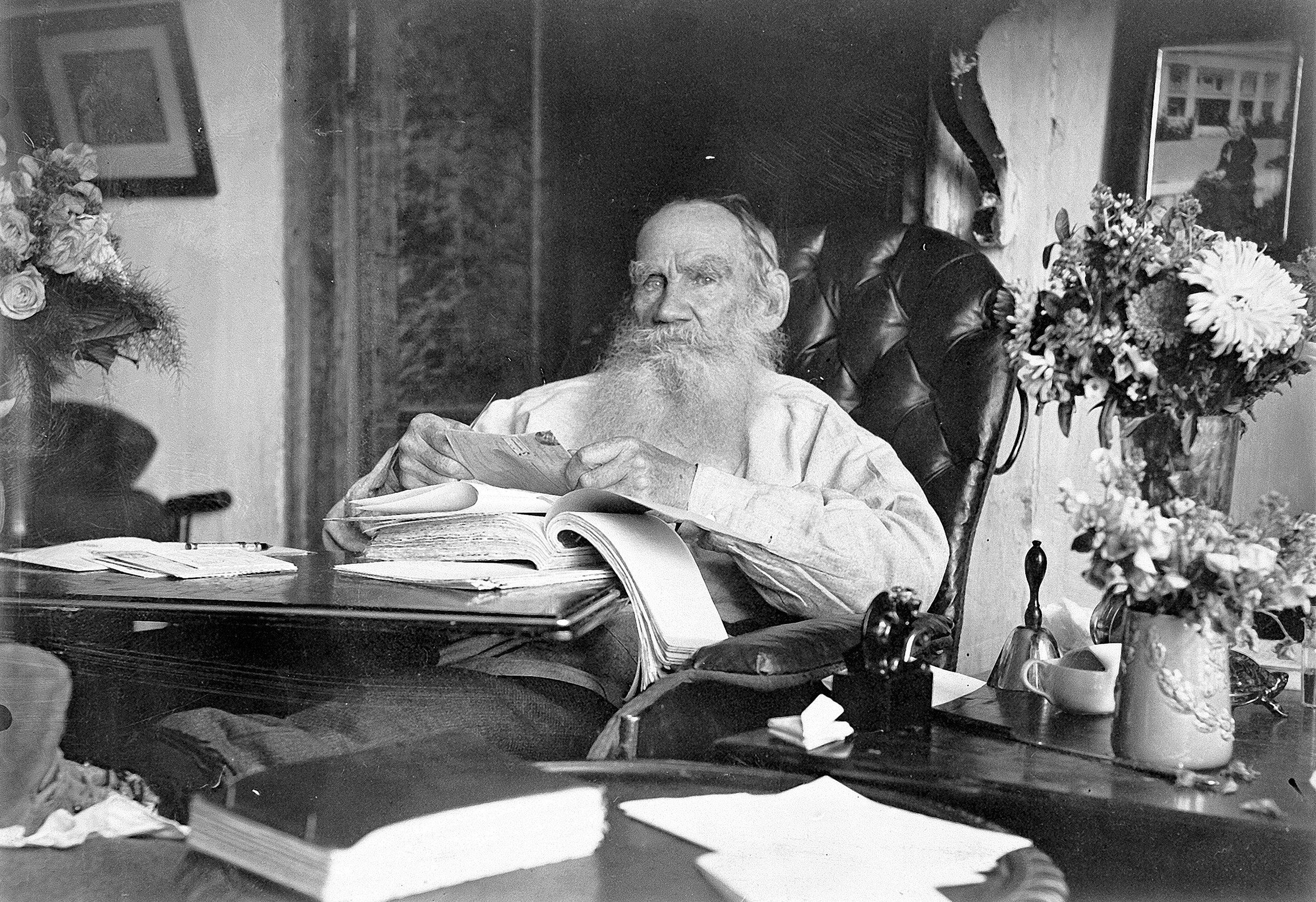Leo Tolstoy Archive
Written: 1904
Source: "Fables for Children," by Leo Tolstoy, translated from the original Russian and edited by leo Wiener, assistant Professor of Slavic Languages at Harvard University, published by Dana Estese Company, Boston, Edition De Luxe, limited to one thousand copies of which this is no. 411, copyright 1904, electrotyped and printed by C. H. Simonds and Co., Boston, Massachusetts, USA.
Transcription/Markup: Andy Carloff
Online Source: RevoltLib.com; 2021

Wild fowls are called pheasants in the Caucasus. There are so many of them that they are cheaper there than tame chickens. Pheasants are hunted with the "hobby," by scaring up, and from under dogs. This is the way they are hunted with the "hobby." They take a piece of canvas and stretch it over a frame, and in the middle of the frame they make a cross piece. They cut a hole in the canvas. This frame with the canvas is called a hobby. With this hobby and with the gun they start out at dawn to the forest. The hobby is carried in front, and through the hole they look out for the pheasants. The pheasants feed at daybreak in the clearings. At times it is a whole brood,—a hen with all her chicks, and at others a cock with his hen, or several cocks together.
The pheasants do not see the man, and they are not afraid of the canvas and let the hunter come close to them. Then the hunter puts down the hobby, sticks his gun through the rent, and shoots at whichever bird he pleases.
This is the way they hunt by scaring up. They let a watch-dog into the forest and follow him. When the dog finds a pheasant, he rushes for it. The pheasant flies on a tree, and then the dog begins to bark at it. The hunter follows up the barking and shoots the pheasant in the tree. This chase would be easy, if the pheasant alighted on a tree in an open place, or if it sat still, so that it might be seen. But they always alight on dense trees, in the thicket, and when they see the hunter they hide themselves in the branches. And it is hard to make one's way through the thicket to the tree on which a pheasant is sitting, and hard to see it. So long as the dog alone barks at it, it is not afraid: it sits on a branch and preens and flaps its wings at the dog. But the moment it sees a man, it immediately stretches itself out along a bough, so that only an experienced hunter can tell it, while an inexperienced one will stand near by and see nothing.
When the Cossacks steal up to the pheasants, they pull their caps over their faces and do not look up, because a pheasant is afraid of a man with his gun, but more still of his eyes.
This is the way they hunt from under dogs. They take a setter and follow him to the forest. The dog scents the place where the pheasants have been feeding at daybreak, and begins to make out their tracks. No matter how the pheasants may have mixed them up, a good dog will always find the last track, that takes them out from the spot where they have been feeding. The farther the dog follows the track, the stronger will the scent be, and thus he will reach the place where the pheasant sits or walks about in the grass in the daytime. When he comes near to where the bird is, he thinks that it is right before him, and starts walking more cautiously so as not to frighten it, and will stop now and then, ready to jump and catch it. When the dog comes up very near to the pheasant, it flies up, and the hunter shoots it.